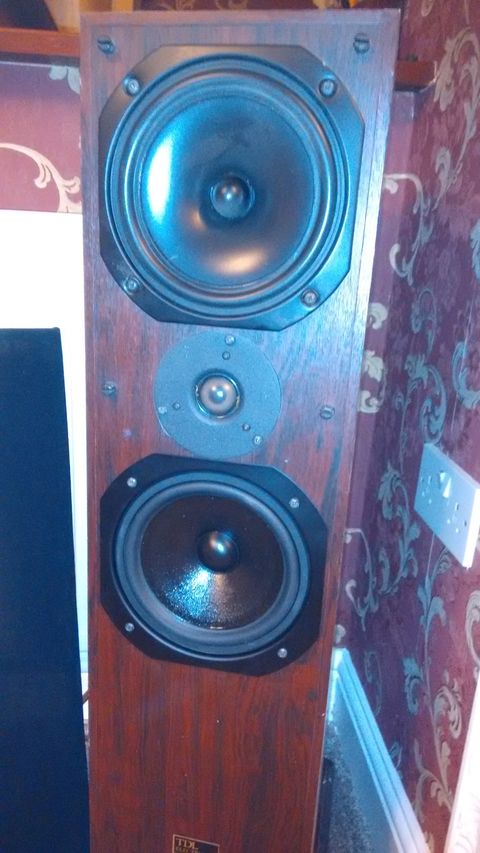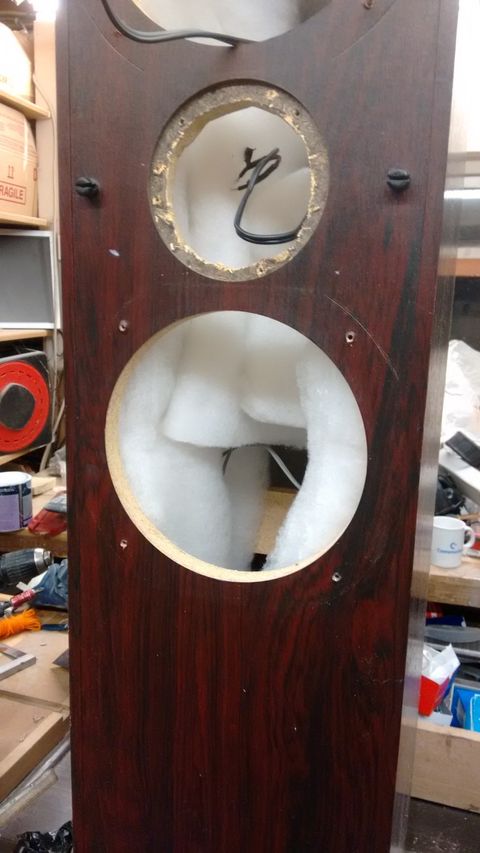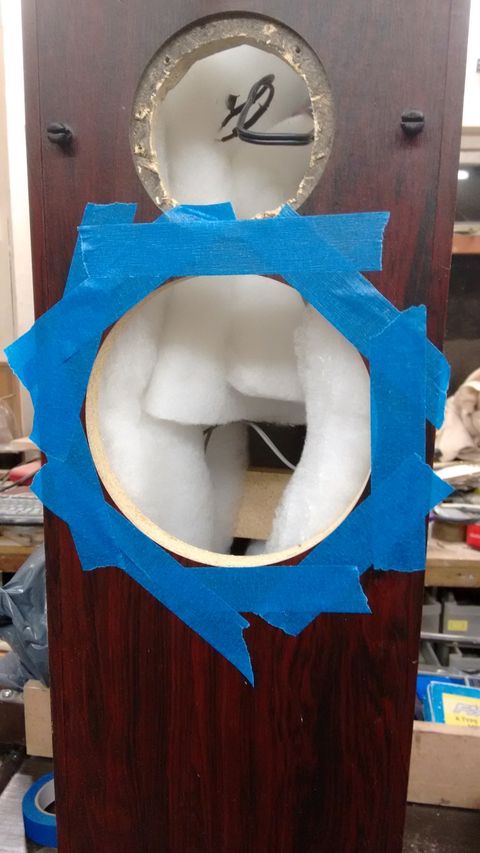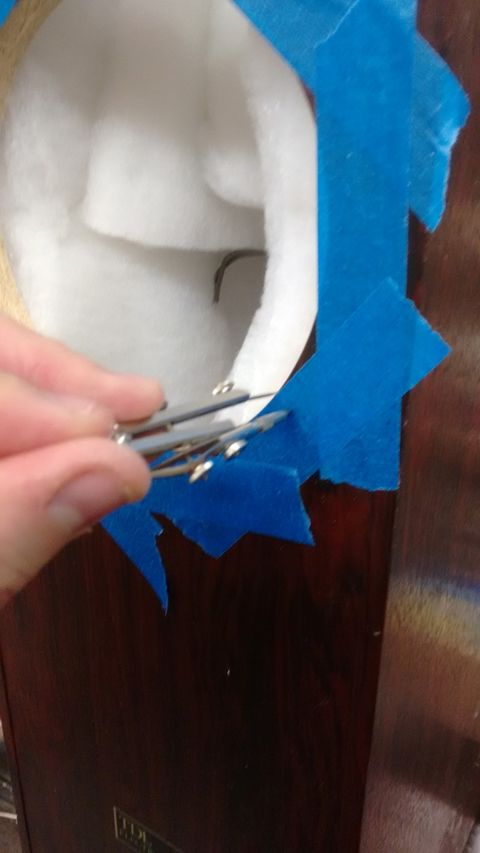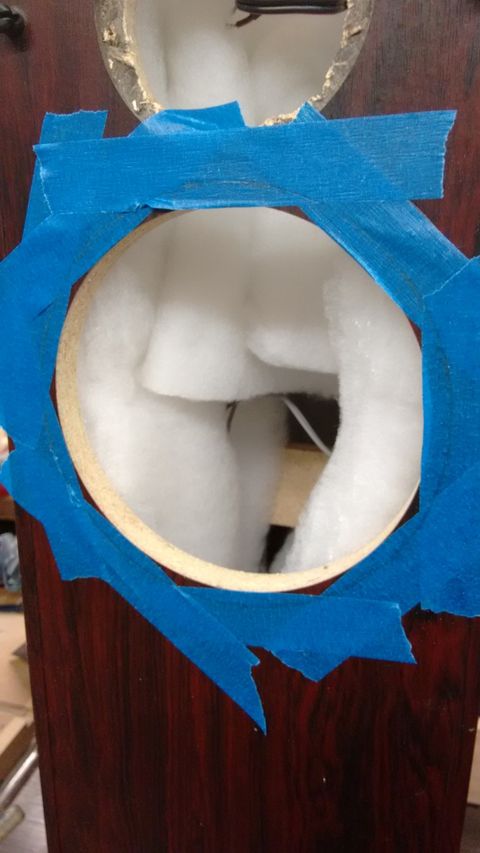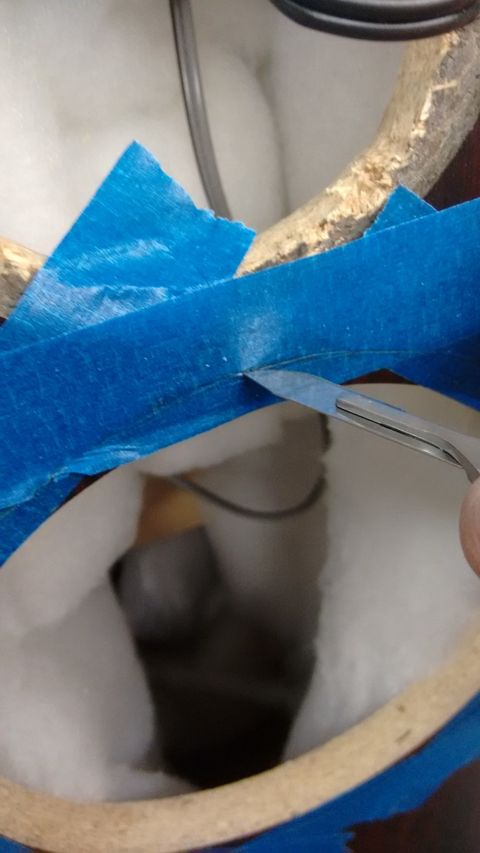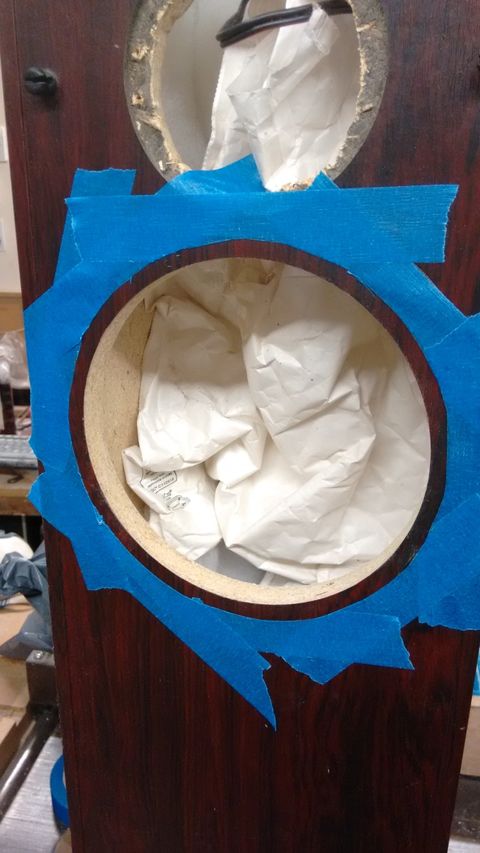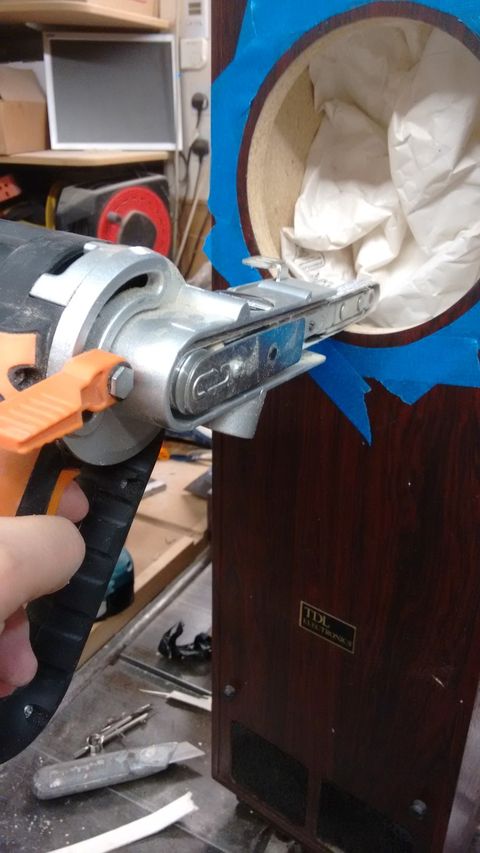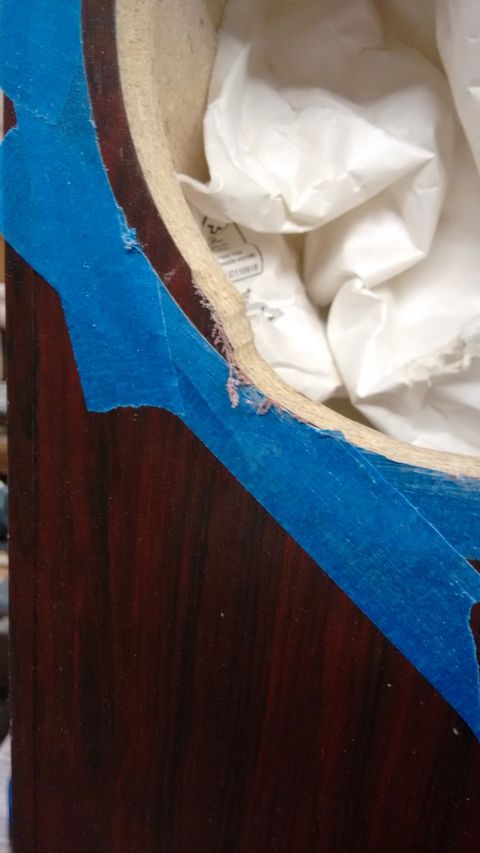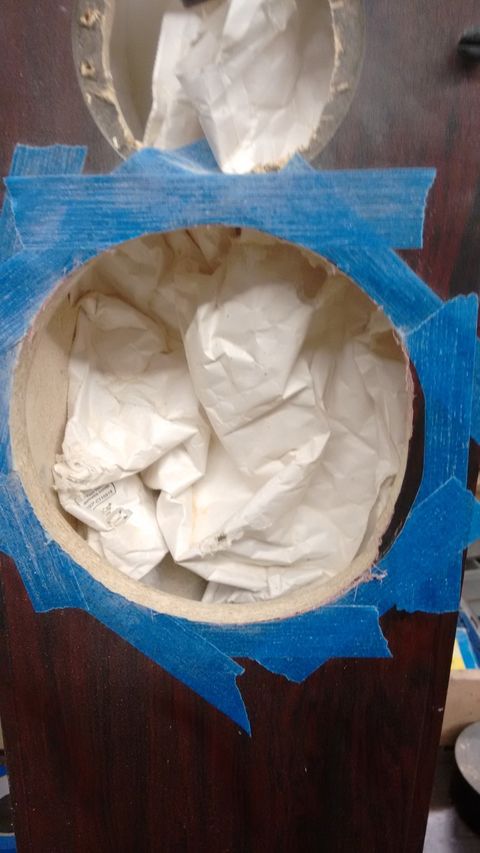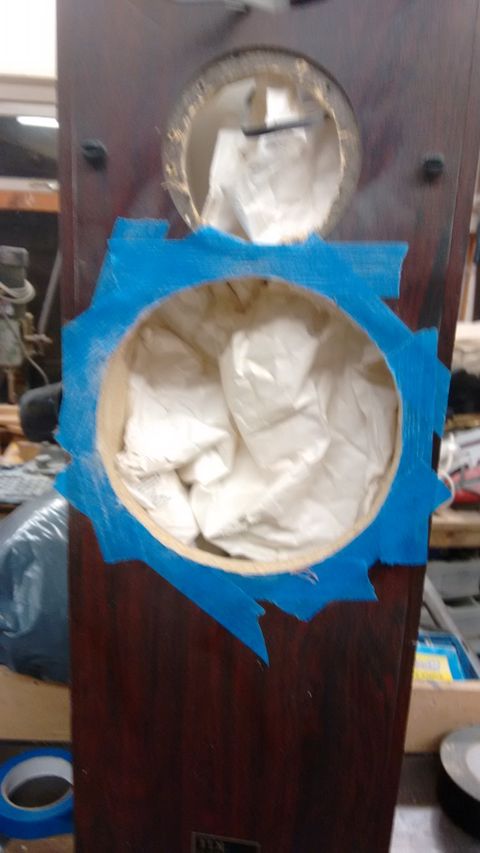RTL3 Speaker repair
Introduction
This is just a quick description of a repair / upgrade of a TDL RTL3 floor standing speaker. Although the components used here are specific to this repair job, the technique described can be used where any speaker change or upgrade requires an in place enlargement of a baffle cut-out.
Background
Transducer Developments Limited (TDL) was a uk based speaker manufacture (owned by speaker driver manufacturing parent company ELAC) that produced an innovative range of speakers using a "Transmission Line" enclosure design. They operated from the early 70s to the early naughties when the brand was acquired by Richer Sounds - so there are later models that share the name even if not the renowned audio performance). TDL's favoured design uses a complicated ducted cabinet to create high sensitivity Hi-Fi speakers which blend impressive in room bass response, with a great dynamic range.
These particular RTL3 ("Reference standard Transmission Line") speakers were acquired second hand in a slightly distressed state. One of the main drivers was physically damaged, one crossover blown, along with its tweeter, and the other crossover missing altogether! Rebuilding the crossovers to the original design (but using better spec components), replacing both the original Vifra tweeters with Morel MDT 30S units, and sourcing some second hand replacement ELAC 172-NS-06 mid/bass drivers from ebay created a great sounding set of speakers that has worked well for years. Alas recently some distortion started to creep in. Investigation identified the lower driver of one speaker as the main culprit, and a closer look showed the rubber suspension was starting to fail. Swapping this for my remaining spare driver helped but did not make for a complete fix, since as soon at that channel was perfect again, you could now hear similar (but less noticeable) distortion on the other channel.
So following a conversation with the folks at Wilmslow Audio (who also do a speaker kit very similar in spec to the original RTL3), I ordered a couple of Monacor SPH 175 drivers. These are a good specification match for the original drivers, and have the same mounting hole locations. Alas the back projection of them is slightly wider, and does not fit all versions of the RTL3 cabinet as a drop in replacement. I found I needed to enlarge the baffle cut-out from its original 149mm to 162mm to fit the new drivers)
Preparation
To save risk of damaging a driver, I removed all three from both cabinets, just leaving the wadding and the crossovers still installed.
The next job was to mark out the new circumference prior to enlarging the hole. Since the wood is very dark on these cabinets its not easy to see a pencil line. So I first used some masking tape:
Then marked round that using a pair of compasses to get the required offset.
To make a really clear line, I then cut through the tape, following the line:
Cutting
The next decision was how to make the cut. The obvious solution would be to use a jigsaw, although I did not want to fill the case with wood dust, so instead I opted for a small electric narrow belt sander. This has the advantage of "pulling" all the dust out of the case toward the operator (who in this case was holding a strategically placed vacuum cleaner nozzle!)
Blocking off the internal cabinet wadding with a scrunched up padded envelope also ensured as little debris as possible can fall into the cabinet. The 80 grit belt cuts trough the particle board case surprisingly rapidly, and can sand accurately to the line.
The whole process taking just under 15 mins per speaker:
Job done.
Once both cabinets were done and cleaned up the drivers could be reinstalled, and the result tested.
The result, still the deep easy open bass response, lashings of fine detail, and open dynamics just like before. A very slightly "brighter" presentation from the new drivers but still in keeping with the original (these will probably mellow a little with use as the surrounds loosen up)
